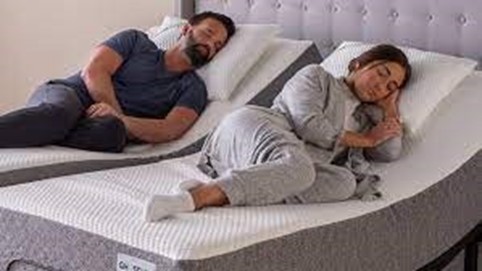A nurse in a provider's office is teaching a client about the self-management of GERD.
Which of the following instructions should the nurse include?
"Increase your caloric intake by 250 calories per day."
"Lie down for 30 minutes after each meal."
"Eat a light meal 1 hour before bedtime."
"Sleep with the head of your bed elevated 6 inches.".
The Correct Answer is D

One of the lifestyle changes that doctors recommend for managing symptoms of gastroesophageal reflux disease (GERD) is elevating the head during sleep by placing a foam wedge or extra pillows under the head and upper back to incline the body and raising the head off the bed 6 to 8 inches.
Choice A: “Increase your caloric intake by 250 calories per day” is not an answer because it is not mentioned as a self-management strategy for GERD in my sources.
Choice B: “Lie down for 30 minutes after each meal” is not an answer because it is not mentioned as a self-management strategy for GERD in my sources.
Choice C: “Eat a light meal 1 hour before bedtime” is not an answer because it is not mentioned
Nursing Test Bank
Naxlex Comprehensive Predictor Exams
Related Questions
Correct Answer is B
Explanation
The correct answer is choice B: Insert an NG tube.
Choice A rationale: Inserting an indwelling urinary catheter may be necessary for monitoring urine output in some cases, but in this situation, the priority is to insert an NG tube. This will help prevent aspiration during surgery due to the client's high blood alcohol level, which increases the risk of vomiting.
Choice B rationale: Inserting an NG tube is the priority action for the nurse because a high blood alcohol level increases the risk of vomiting and aspiration during surgery. An NG tube can help reduce this risk by keeping the stomach empty and minimizing the chance of aspiration.
Choice C rationale: Obtaining consent for surgery is important, but in emergency situations, consent may be implied, or a designated surrogate decision-maker may provide consent. It is not the priority action for the nurse in this scenario.
Choice D rationale: Applying antiembolic stockings is a preventive measure for deep vein thrombosis, but it is not the priority action in this case. Ensuring the client's safety during surgery, specifically by preventing aspiration, takes precedence due to the client's high blood alcohol level.
Correct Answer is D
Explanation
The nurse should plan to offer frequent, high-carbohydrate meals to the client who is receiving radiation and reports nausea since the therapy was initiated.
Eating smaller, more frequent meals rather than three large meals a day can help decrease nausea.
Choice A is incorrect because offering highly seasoned foods may not help with nausea.
Choice B is incorrect because offering hot beverages with meals may not help with nausea.
Choice C is incorrect because offering a snack prior to radiation therapy may not help with nausea.
Whether you are a student looking to ace your exams or a practicing nurse seeking to enhance your expertise , our nursing education contents will empower you with the confidence and competence to make a difference in the lives of patients and become a respected leader in the healthcare field.
Visit Naxlex, invest in your future and unlock endless possibilities with our unparalleled nursing education contents today
Report Wrong Answer on the Current Question
Do you disagree with the answer? If yes, what is your expected answer? Explain.
Kindly be descriptive with the issue you are facing.
